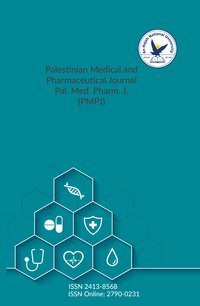Zebrafish: A Genetic Wonder Revealing Regeneration and Drug Discovery Secrets
Article info
2024-04-02
2024-04-30
2024-11-20
521 - 542
Keywords
- Hippo signaling pathway
- Zebrafish
- Wnt pathway
- Mef2 pathway
- FGF pathway
Abstract
The purpose of this review is to draw attention to the many ways in which zebrafish (Danio rerio) have been used in biomedical research, particularly in the areas of drug development, regeneration processes, and pathology. Many benefits are associated with zebrafish, such as their tiny size, quick growth, transparency throughout early development, and genetic resemblance to humans. In the field of drug development, they are highly useful for assessing the effectiveness, safety, and adverse effects of drugs, especially in the context of cancer, neurological illnesses, and cardiovascular disease. Brain diseases like addiction and anxiety can be better understood with the help of zebrafish, which are also useful in neurobehavioral research. A wide range of diseases, including those affecting the blood and bones, can be better understood and treated with the use of zebrafish models. These models are also excellent for discovering new drug targets and evaluating the efficacy of possible treatments. Zebrafish can also repair their own fins, hearts, spinal cords, and even their eyes if they become injured. by controlling key signalling cascades like Wnt, Hippo, and FGF, new therapeutic targets have been identified. This renders them priceless for investigations into human tissue injury and organ failure, as well as investigations into mechanisms of regeneration. Researchers still need to think about the limits of zebrafish models, like genetic duplications, physiological and anatomical variances, and the limitations of antibody-based techniques, even though they are useful. Ensuring the applicability of research outputs to human health and illness requires a thorough understanding of these limitations.
Zebrafish: A Genetic Wonder Revealing Regeneration and Drug Discovery Secrets
المؤلفون:
معلومات المقال
2024-04-02
2024-04-30
2024-11-20
521 - 542
الكلمات الإفتتاحية
- Hippo signaling pathway
- Zebrafish
- Wnt pathway
- Mef2 pathway
- FGF pathway
الملخص
The purpose of this review is to draw attention to the many ways in which zebrafish (Danio rerio) have been used in biomedical research, particularly in the areas of drug development, regeneration processes, and pathology. Many benefits are associated with zebrafish, such as their tiny size, quick growth, transparency throughout early development, and genetic resemblance to humans. In the field of drug development, they are highly useful for assessing the effectiveness, safety, and adverse effects of drugs, especially in the context of cancer, neurological illnesses, and cardiovascular disease. Brain diseases like addiction and anxiety can be better understood with the help of zebrafish, which are also useful in neurobehavioral research. A wide range of diseases, including those affecting the blood and bones, can be better understood and treated with the use of zebrafish models. These models are also excellent for discovering new drug targets and evaluating the efficacy of possible treatments. Zebrafish can also repair their own fins, hearts, spinal cords, and even their eyes if they become injured. by controlling key signalling cascades like Wnt, Hippo, and FGF, new therapeutic targets have been identified. This renders them priceless for investigations into human tissue injury and organ failure, as well as investigations into mechanisms of regeneration. Researchers still need to think about the limits of zebrafish models, like genetic duplications, physiological and anatomical variances, and the limitations of antibody-based techniques, even though they are useful. Ensuring the applicability of research outputs to human health and illness requires a thorough understanding of these limitations.
Why should you
Publish With Us?
An-Najah National University
Nablus, Palestine
Nablus, Palestine
- P.O. Box
- 7, 707
- Fax
- (970)(9)2345982
- Tel.
- (970)(9)2345560
- (970)(9)2345113/5/6/7-Ext. 2628
- [email protected]
- EIC
- Prof. Waleed Sweileh
The Palestinian Medical and Pharmaceutical Journal (Pal. Med. Pharm. J.) © 2024 by An-Najah University, Nablus, Palestine is licensed under CC BY-NC 4.0
